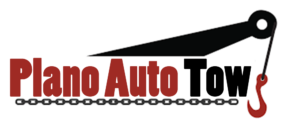Cold chain logistics plays a critical role in transporting and storing temperature-sensitive goods such as pharmaceuticals, fresh produce, and dairy products. However, maintaining an effective cold chain in high-altitude regions presents unique challenges that are not commonly encountered in other environments. High-altitude areas often face extreme weather conditions, reduced air pressure, and limited infrastructure, making it difficult to maintain the required temperature and humidity levels throughout the supply chain.
In this blog post, we’ll explore the specific challenges faced by cold chain logistics in high-altitude regions, along with innovative solutions that are helping to overcome these obstacles. We’ll also delve into some lesser-known factors that impact cold chain operations at high altitudes, providing a comprehensive overview of this complex issue.
The unique challenges of cold chain logistics in high-altitude regions
High-altitude regions, typically defined as areas located at elevations of 2,400 meters (8,000 feet) or higher, pose a variety of logistical challenges that can disrupt cold chain operations. These challenges stem from the physical environment, infrastructure limitations, and the specific needs of the communities living in these areas.
1. Extreme temperature variations
High-altitude regions are characterized by extreme temperature variations, both daily and seasonally. While the air temperature can be very cold, especially at night and during winter, there can also be significant temperature fluctuations throughout the day. Maintaining a consistent temperature in these conditions is challenging, particularly when transporting perishable goods that are sensitive to even slight temperature deviations.
Cold temperatures: the extremely low temperatures in high-altitude regions can cause products to freeze, even if they are meant to be kept cool but not frozen. For example, vaccines and certain pharmaceuticals must be stored at specific temperatures, and freezing can render them ineffective.
Temperature fluctuations: the wide range of temperatures during the day can cause the internal temperature of refrigerated containers or storage units to fluctuate, potentially compromising the integrity of the cold chain.
Example: in regions like the himalayas, where temperatures can vary drastically between day and night, maintaining a stable temperature for pharmaceuticals and vaccines is particularly challenging.
2. Reduced air pressure and oxygen levels
The reduced air pressure and oxygen levels at high altitudes can affect the performance of refrigeration systems and other cold chain equipment. Refrigeration units that are designed for use at sea level may not operate as efficiently in high-altitude environments, leading to potential failures or reduced cooling capacity.
Impact on refrigeration systems: lower air pressure can reduce the efficiency of compressors used in refrigeration systems, making it harder to achieve and maintain the desired temperature. This can lead to increased energy consumption and a higher risk of temperature excursions.
Example: refrigeration systems used in high-altitude areas such as the andes must be specially adapted to cope with the reduced air pressure to ensure consistent cooling performance.
3. Infrastructure limitations
High-altitude regions often have limited infrastructure, which can complicate cold chain logistics. Poorly developed roads, lack of reliable electricity, and inadequate storage facilities can all hinder the ability to maintain a consistent cold chain.
Transportation challenges: the rugged terrain and limited road networks in high-altitude areas can make transportation slow and unreliable. This increases the risk of delays, which can lead to temperature excursions, especially if the products are exposed to ambient conditions for extended periods.
Limited cold storage: many high-altitude regions lack sufficient cold storage facilities, making it difficult to store temperature-sensitive products close to their point of use. This necessitates longer transportation times, further complicating the maintenance of the cold chain.
Example: in remote areas of nepal, the lack of reliable cold storage facilities means that vaccines and other pharmaceuticals must be transported from lowland areas, increasing the risk of temperature excursions during transit.
4. Energy supply challenges
The availability of reliable energy sources is often limited in high-altitude regions, which can affect the ability to power refrigeration units and other cold chain equipment. Power outages and unreliable electricity grids are common in these areas, making it difficult to maintain a stable cold chain.
Power outages: frequent power outages can disrupt cold chain operations, leading to temperature fluctuations that compromise product integrity. Backup generators may not always be available or sufficient to maintain the necessary temperature for extended periods.
Renewable energy limitations: while renewable energy sources such as solar power are increasingly used in high-altitude regions, their effectiveness can be limited by factors such as cloud cover, snow, and reduced sunlight during winter months.
Example: in the andean regions of south america, power outages are common, and solar panels may not provide sufficient energy during the winter months, necessitating alternative solutions for maintaining cold chain operations.
5. Human factors and training
The successful implementation of cold chain logistics in high-altitude regions also depends on the availability of trained personnel who understand the specific challenges of these environments. In many cases, local workers may not have the necessary training to manage cold chain equipment and monitor temperature-sensitive products effectively.
Lack of training: in remote high-altitude areas, there may be a lack of personnel with the technical expertise required to operate and maintain cold chain equipment. This can lead to errors in temperature monitoring, equipment failure, and ultimately, product spoilage.
Cultural and language barriers: in some high-altitude regions, cultural and language differences can pose additional challenges to training and communication, further complicating the effective management of cold chain logistics.
Example: in the remote regions of the himalayas, local healthcare workers may require specialized training to manage the cold chain for vaccines, particularly during the winter months when conditions are harsh.
Innovative solutions for cold chain logistics in high-altitude regions
Despite the challenges, there are several innovative solutions being developed and implemented to ensure the success of cold chain logistics in high-altitude regions. These solutions range from advanced technology to improved infrastructure and training programs.
1. Altitude-adapted refrigeration systems
To address the challenges of reduced air pressure and temperature fluctuations, manufacturers are developing refrigeration systems specifically designed for high-altitude use. These systems are built to operate efficiently in low-pressure environments, ensuring consistent cooling performance.
High-altitude refrigeration units: these units are equipped with compressors and cooling systems that are optimized for reduced air pressure, allowing them to maintain the desired temperature even in challenging conditions. They may also include enhanced insulation to protect against external temperature fluctuations.
Example: vaccine refrigerators designed for use in high-altitude regions of the andes have been adapted to function reliably at elevations of over 4,000 meters (13,000 feet), ensuring that vaccines remain effective despite the harsh environment.
2. Renewable energy solutions
Given the challenges associated with unreliable energy supply in high-altitude regions, renewable energy solutions such as solar power are increasingly being used to power cold chain equipment. These solutions offer a sustainable and reliable source of energy, particularly in remote areas where grid power is not available.
Solar-powered refrigerators: solar-powered refrigeration units are designed to operate independently of the grid, using solar panels to generate electricity. These units are particularly useful in remote, high-altitude regions where conventional power sources are unreliable.
Wind and hydroelectric power: in addition to solar power, wind and small-scale hydroelectric systems can provide alternative energy sources for cold chain logistics in high-altitude areas. These renewable energy solutions can be used to supplement solar power, particularly during periods of reduced sunlight.
Example: in the himalayas, solar-powered vaccine refrigerators are used to maintain the cold chain for immunization programs, even in areas with no access to electricity.
3. Portable cold chain solutions
Portable cold chain solutions are becoming increasingly important in high-altitude regions, where infrastructure limitations make it difficult to establish permanent cold storage facilities. These portable solutions allow for the safe transport and temporary storage of temperature-sensitive products.
Portable refrigerators and coolers: battery-powered or solar-powered portable refrigerators and coolers can be used to transport vaccines, pharmaceuticals, and other perishable goods over long distances in high-altitude regions. These units are designed to maintain a consistent temperature, even in extreme conditions.
Insulated containers: lightweight, insulated containers with advanced thermal properties can be used to transport perishable goods while minimizing temperature fluctuations. These containers are particularly useful in areas where transportation may be slow or unpredictable.
Example: in the andes, portable vaccine carriers equipped with solar panels are used to transport vaccines to remote villages, ensuring that they remain effective despite the challenging conditions.
4. Remote monitoring and iot technology
The use of remote monitoring and internet of things (iot) technology is revolutionizing cold chain logistics in high-altitude regions. These technologies allow for real-time monitoring of temperature and humidity levels, providing early warnings of potential issues and enabling immediate corrective action.
Iot-enabled sensors: iot-enabled sensors can be placed inside refrigeration units, transport vehicles, and storage facilities to continuously monitor environmental conditions. These sensors transmit data to a central system, allowing operators to track temperature and humidity levels in real-time.
Remote monitoring systems: remote monitoring systems provide alerts if temperature levels deviate from the acceptable range, allowing for quick intervention. This is particularly important in high-altitude regions where access to cold chain equipment may be limited.
Example: in remote regions of the himalayas, iot-enabled sensors are used to monitor the temperature of vaccines stored in solar-powered refrigerators, ensuring that the cold chain is maintained even in harsh conditions.
5. Training and capacity building
Effective cold chain logistics in high-altitude regions requires well-trained personnel who understand the specific challenges of these environments. Training programs and capacity-building initiatives are essential for equipping local workers with the skills needed to manage cold chain equipment and ensure product integrity.
Technical training programs: training programs focused on cold chain management, equipment operation, and temperature monitoring can help local workers in high-altitude regions effectively manage cold chain logistics. These programs should be tailored to the specific needs of the region and the types of products being transported.
Cultural sensitivity training: in regions with diverse cultural and linguistic backgrounds, training programs should also address cultural and language barriers to ensure effective communication and collaboration.
Example: in the andes, local healthcare workers receive specialized training on managing cold chain logistics for vaccines, including how to operate altitude-adapted refrigeration units and monitor temperature levels.
Conclusion
Cold chain logistics in high-altitude regions presents a unique set of challenges, from extreme temperature variations and reduced air pressure to limited infrastructure and energy supply. However, with the right strategies and innovations, these challenges can be effectively managed to ensure the safe and reliable transport of temperature-sensitive goods.
From altitude-adapted refrigeration systems and renewable energy solutions to portable cold chain units and remote monitoring technology, the industry is developing a range of innovative solutions to address the specific needs of high-altitude regions. Additionally, training and capacity-building initiatives are essential for equipping local workers with the skills needed to manage cold chain operations effectively.
As the demand for temperature-sensitive products continues to grow, particularly in remote and high-altitude regions, the importance of effective cold chain logistics will only increase. By understanding the unique challenges of these environments and implementing innovative solutions, companies can ensure that their products—whether pharmaceuticals, vaccines, or fresh produce—reach their destination in optimal condition, regardless of altitude.
For businesses, healthcare providers, and consumers alike, recognizing the complexities of cold chain logistics in high-altitude regions offers valuable insights into the care and precision required to deliver life-saving and quality products to even the most remote corners of the world.

